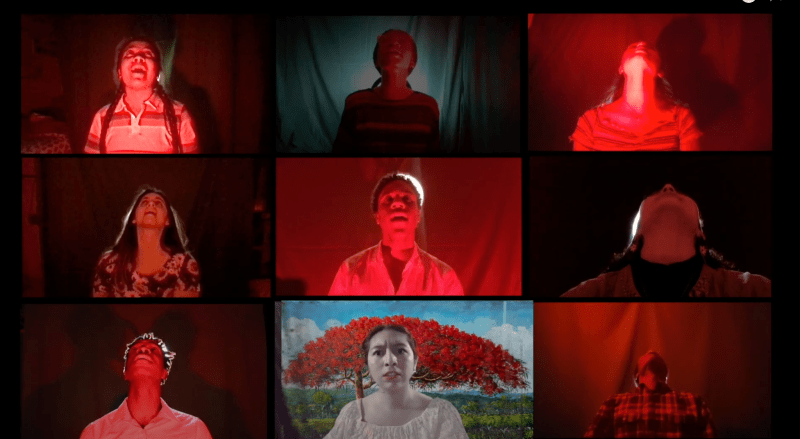Long ago, a woman named Maria married a man with whom she had two children. They lived in marital bliss until she caught him with another woman. Their relationship strained, Maria suspected her husband planned to flee with his mistress and take her children away from her. So, she woke them in the night. “Your father loves you more, but I’ll have you forever,” she told them before dragging them to a river and drowning them — and immediately regretted it. Out of grief, she drowned herself, too. But she was without peace in the afterlife. Now she stalks the earth at night, her soul haunting the river where she drowned her children. That’s how she became the Weeping Woman, or, as generations of children know her, “La Llorona.”
Nostalgic ghost stories make for great drama, hence great theatre. But “La Llorona,” Obed de La Cruz’s chilling playwriting debut, doesn’t draw on the Latinx folklore to blitz you with jump scares. It prompts you: Let go of the past lest the past tightens its hold on you.
If “La Llorona” was ever in jeopardy of rehashing the premise of other horrors about the titular phantom (remember that Llorona surge in 2019 with “La Llorona” and “Curse of La Llorona” released only four months apart? ), the play’s authentic storyline and settings keep it fresh. We meet Elena (Shania Santana), a seamstress living in Corozal, a small town in Puerto Rico, sewing dresses to save up money to fulfill her dream of owning a tailor shop. Her reputation among the locals is marred by the death of her husband Carlos years ago. The police found his corpse in the river behind her house; despite insisting she wasn’t involved, people believed she murdered him for attempting to run away with their young son, Gabi (Dylan Moore). When Gabi turned eighteen, he stole the money from his mother’s shop to pursue his dreams in America. Just as Elena is close to buying the store again five years later, he returns to untangle the mystery around his father’s death under the guise of visiting his ill grandmother. Faced with her son’s arrival, Elena grapples with lingering resentment from their history and the raspy voice in her head begging her to kill him.
The production team of Ram’s Head Theatrical Society seemed to heed the show’s theme of foraging ahead by deviating from Stanford’s historically white theatre scene; the staff behind and in front of the screen are mostly people of color. In the producer’s notes, Evelyn Kuo wrote the show’s brilliance doesn’t just lie within its diversity but that “it is a testament that people of color are fiercely capable of creating entertaining narratives and artwork, and it is a privilege for all of us to appreciate the beauty (and horror!) of the finished product.”
The beauty is difficult to deny. While the fright and gore in the show was a slow burn packed near the end, viewers await the thematic pay-off while submerged in musical performances like rhythmic bass-fueled “Las Bahemias” or “Cigarillo y Machete.” The songs also nod to the history of trauma engraved in the Corozal. In “Orange Tree,” Elena’s grandmother Lydia (Journey Washingtonhigh) stands in the field of growing orange trees and reflects on how she used to dream of motherhood before she was forcibly sterilized by the U.S government after her first child — a procedure most mainland Americans are unaware of continues to happen to this day.
To adapt to a streamed production, Cruz condensed the script for the virtual show and managed to do so without abandoning the spirit of the characters or the setting. The use of drone footage of the river running through Corozal helped ground the musical in a place and the use of mirrored Zoom backgrounds created the illusion that the performers weren’t miles away, but tucked in the same room.
After a year of theatres experimenting with virtual shows, “La Llorona” is an eerie play that demonstrates progress in virtual storytelling with performances that don’t feel molded around but rather designed for the medium. It’s a glimpse of how technology can be used when in-person performances are permitted once again.
